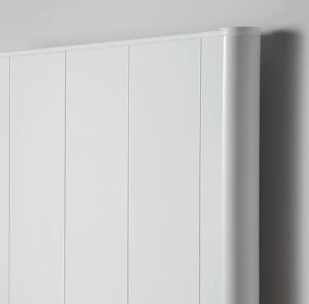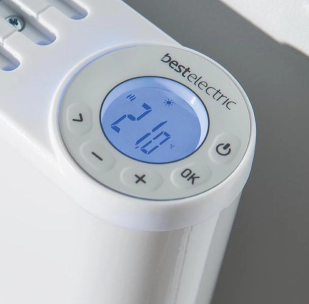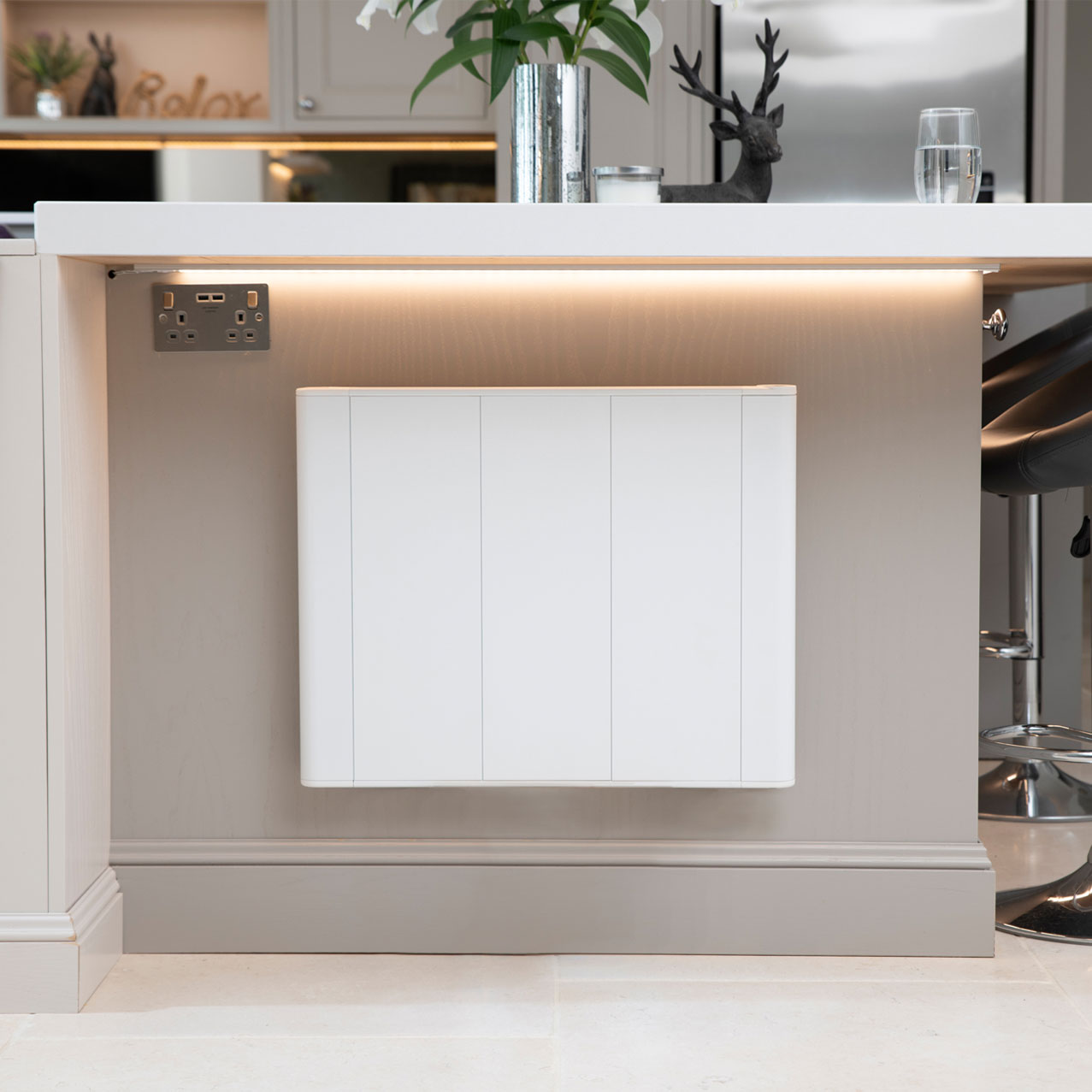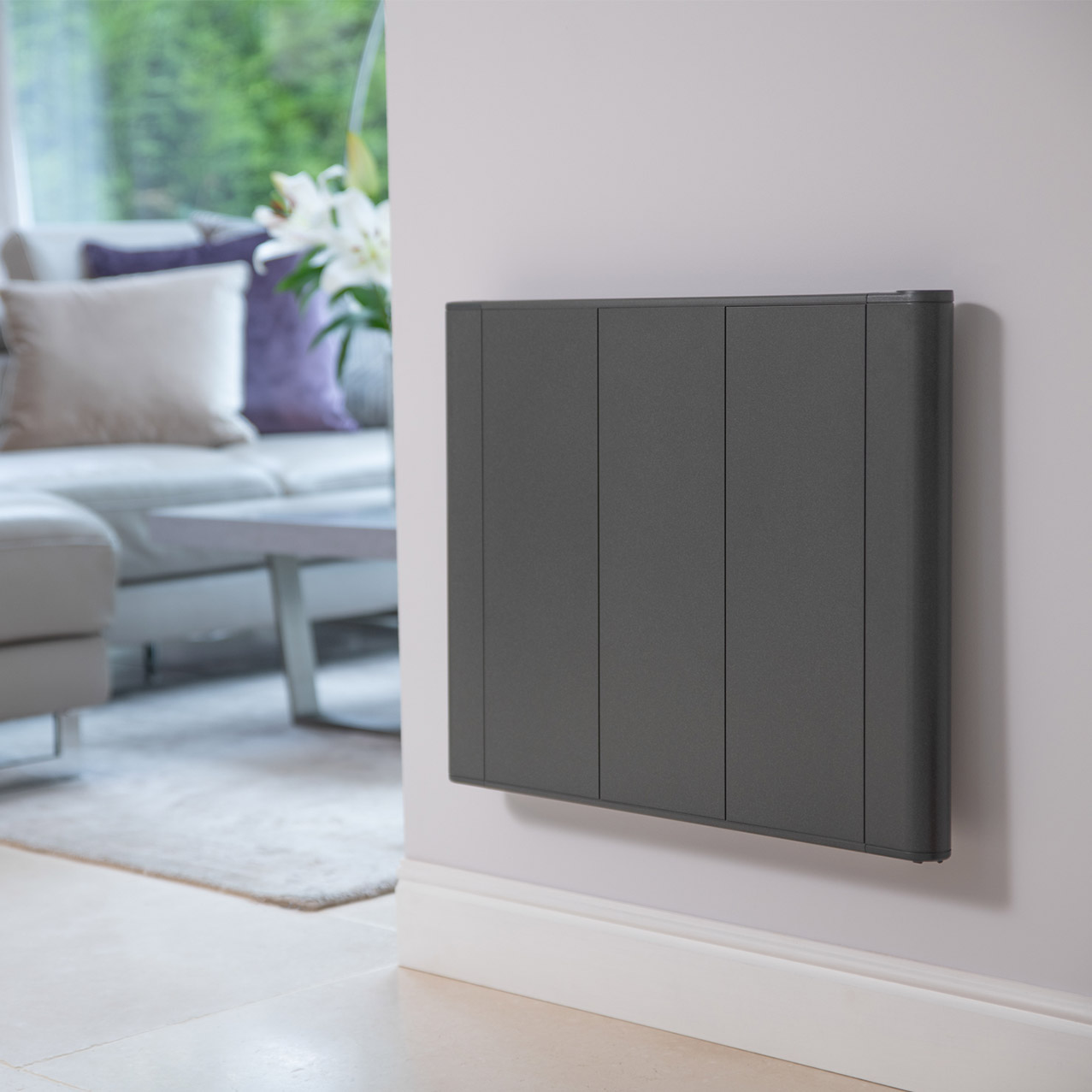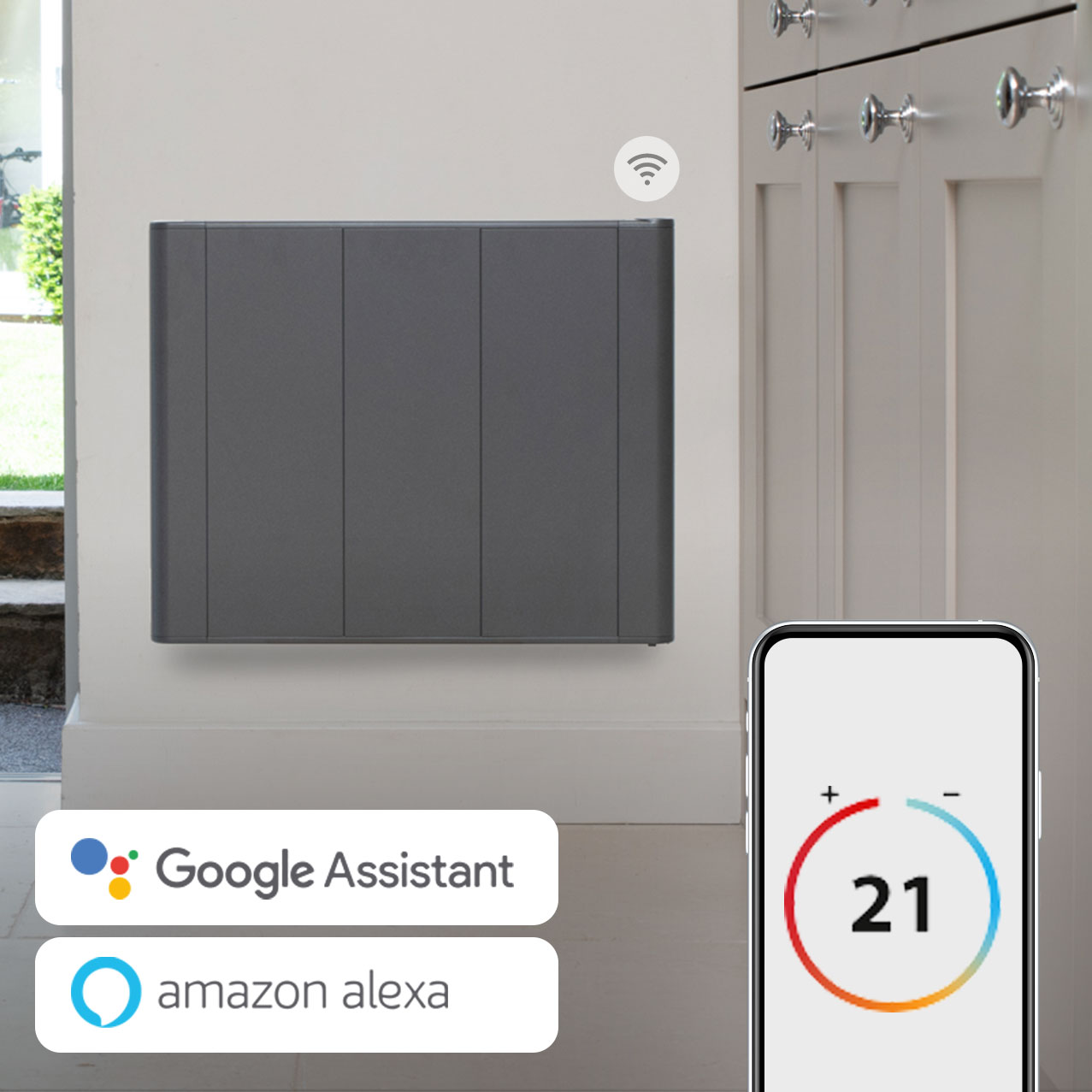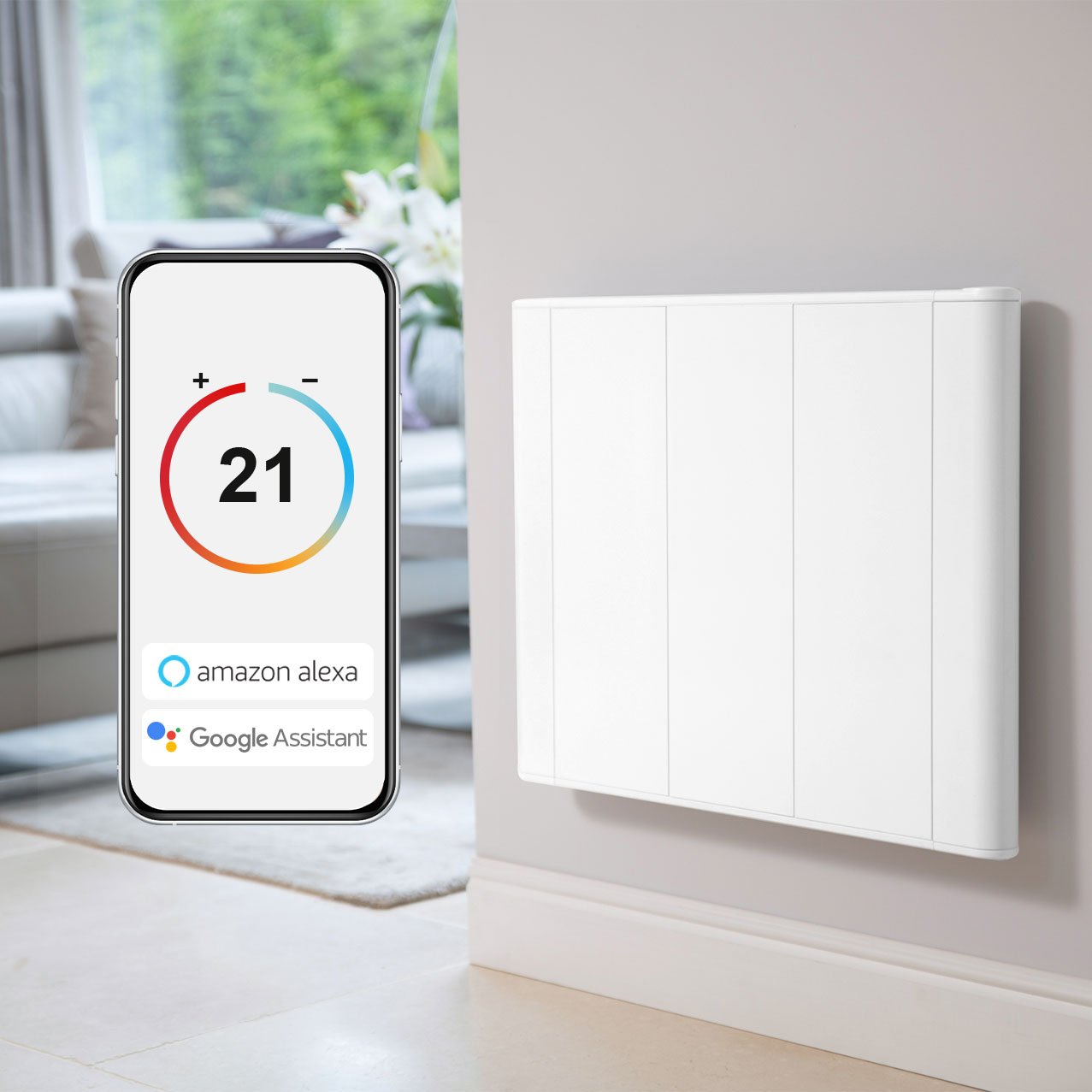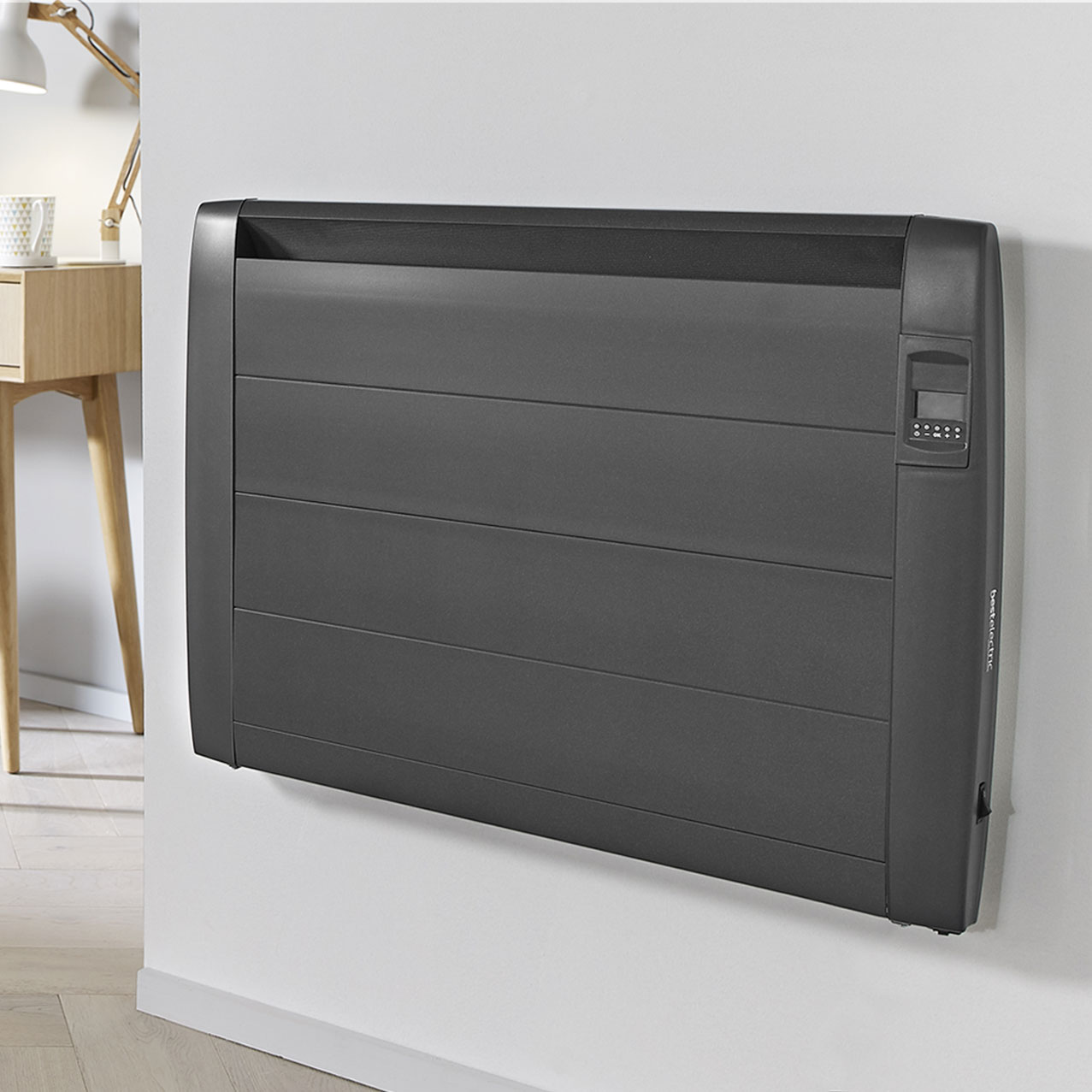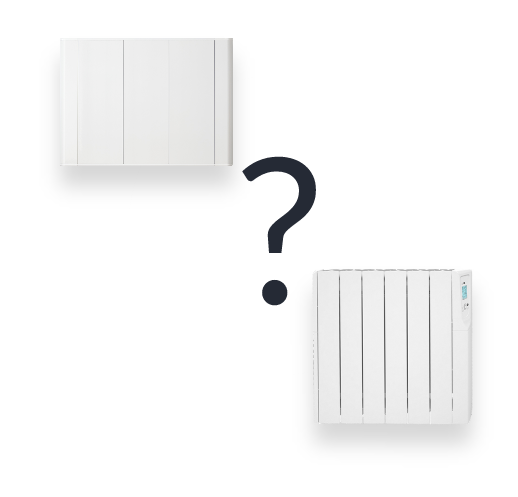
Which electric radiator should I buy?
You’ve decided you want to buy an electric radiator, but which one’s right for you? With the wide range of options and sometimes misleading descriptions online, it can be difficult to know where to start. Our guide will help you choose the best electric radiator for you.
Read on to find out the answers to these common questions about electric heating:
- What are electric radiators?
- What’s the difference between electric heaters and electric radiators?
- What different kinds of electric radiators are there?
- How can I control my electric radiator?
- What features are available?
- Which size do I need?
- How do I install my electric radiator?
Don’t see your question here? Contact us today.
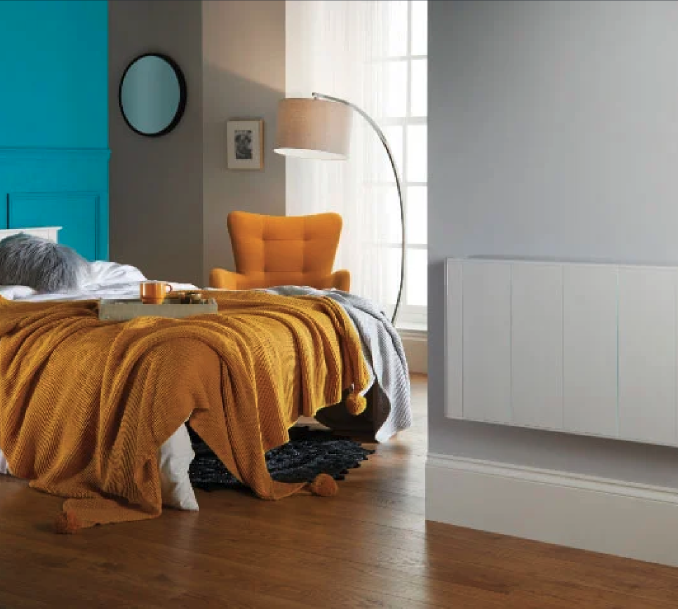
What are electric radiators?
Electric radiators give you the same warmth as a traditional gas central heating system, but they are more energy efficient because they only use power when you need them to.
Equipped for the modern age, electric radiators have integrated thermostats that can digitally measure each room within 0.1 degrees. They can be programmed individually and even controlled via an app, so you can take charge of your energy usage and bills. Finally, because they run off mains electricity, there’s no need to plumb them in, and they require zero maintenance.
What’s the difference between electric
heaters and electric radiators?
What’s the difference between electric heaters and electric radiators?
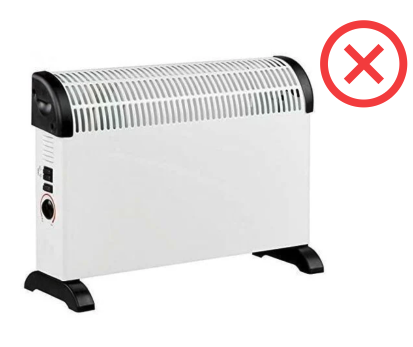
Electric Heaters
Electric heaters are usually a temporary heating solution. They are typically old-fashioned convection heaters that lack the energy-saving features of modern electric radiators, making them less effective and more expensive to run. They also use an internal fan, which can be noisy, and they can dry the air and push dust around the room.
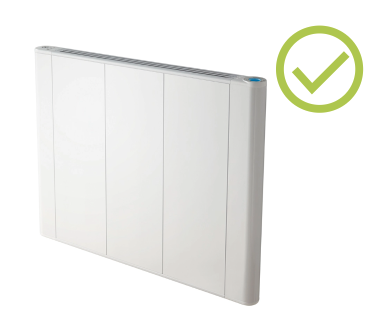
Electric Radiators
Modern electric radiators use a combination of radiant and convection heat, giving the feel of traditional central heating with the benefit of energy-saving features. They are also silent, more efficient and cheaper to run – all of which means they are a viable long-term heating solution.
What different kinds of electric
radiators are there?
Electric radiators can work in three different ways, depending on the heating element. Each type has some benefits but, for the best combination of heat output and energy efficiency, we recommend dry thermal.
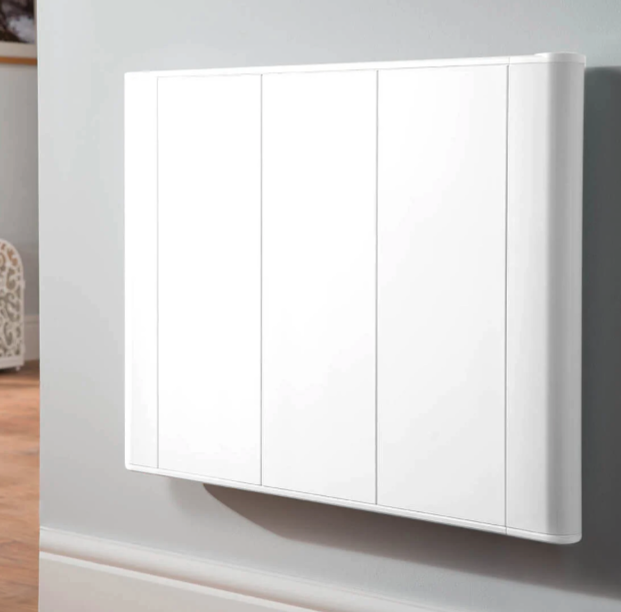
Dry Thermal
Electric radiators that use dry thermal technology are quick to heat up and respond to temperature changes, making them exceptionally energy efficient. Modern designs can be lightweight, portable and ultra slim.
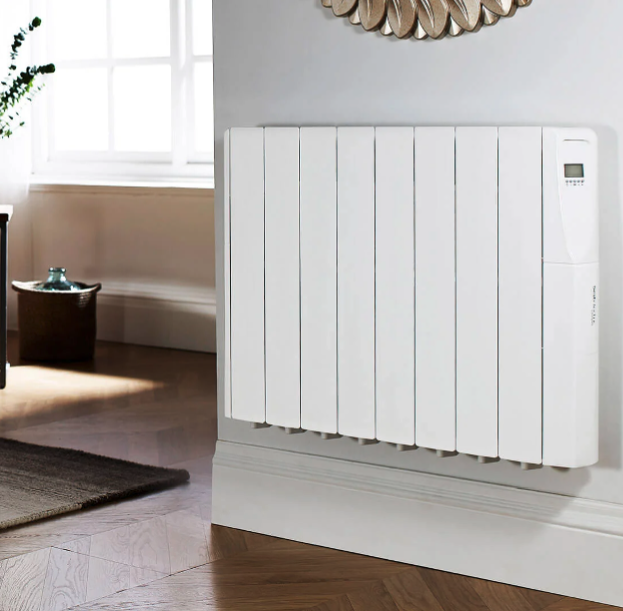
Oil Filled
Oil-filled electric radiators take longer to cool down. This means they keep giving out heat even once they’ve stopped using power, but it takes longer for them to heat up in the first place.
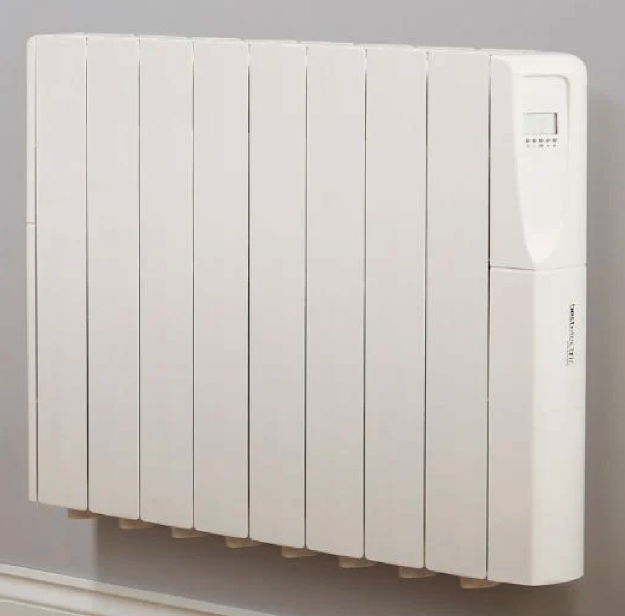
Ceramic Core
Like traditional gas central heating, ceramic-core electric radiators are excellent at retaining heat, which makes them well suited to larger spaces. However, it takes them longer to heat up than dry thermal models.
How can I control my electric radiator?
How you control your electric radiators is up to you. Keep it simple and programme each radiator individually through a control panel, or choose WiFi or Bluetooth options to manage your electric heating via an app or voice command.

Built-in Control Panel
Each radiator is equipped with a simple built-in control panel, making it easy to set and adjust the temperature or schedule your heating in each room.

Wifi
Control WiFi-enabled electric radiators via voice command or through an app, so you can monitor usage and take charge of your heating anytime, anywhere.

Bluetooth
Schedule, adjust and monitor your heating from your phone via Bluetooth connection. It’s simple to set up, but connectivity is more limited than WiFi as you have to be in range of the radiator.
Which size do I need?
Choosing the correct size radiator is crucial to ensuring you get the heat output you expect and that your radiator lasts as long as it should. With electric radiators, size is all about wattage. The wattage you need depends on the space you’re heating. The key factors are outlined here, but our radiator size calculator can do the maths for you.
Room Type
Whether you’re heating the living room or the bathroom, the hallway or the conservatory, each space has different properties that determine how much energy is required to heat it to a comfortable temperature.
Room Size
The area and height of any space directly affects how much energy is required to heat it. Larger rooms with higher ceilings will require higher wattage radiators.
Room Features
Other features that affect how well a space retains heat include whether it contains stairs or faces north, and how many external walls it has.
Insulation
The better your insulation, the less energy required to reach your desired temperature, and so the lower the wattage needed on your electric radiator.
What Is Wattage?
When we talk about the size of an electric radiator, we’re referring to its wattage output. A radiator’s wattage describes how many watts of energy the radiator uses to heat up the room. We typically recommend 100W per m2.
Bigger or poorly insulated spaces take more energy to heat, so they require radiators with a higher wattage to reach a comfortable temperature. Whatever size you need, our electric radiators draw energy for as little as 25% of the time they are programmed to be on, thanks to their energy-saving features.
How do I install my electric radiator?
Electric radiators are much easier to install than a traditional gas central heating system because they don’t need to be plumbed in. You can be up and running with just basic tools and DIY skills, but you’ll need a professional if you want them to be hard-wired into your home.
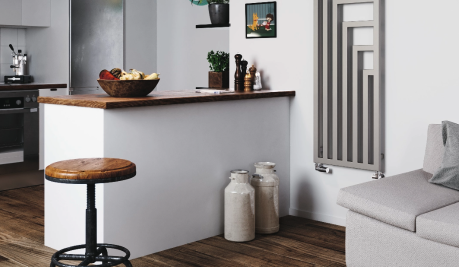
Wall Mounted
Each radiator comes with the fixtures you need to attach it to the wall. Then simply plug it in and get started. For a more minimalist look, wall-mounted electric radiators can be hardwired in with the help of an electrician.

Free Standing
For a more flexible electric heating option, attach feet to the underside of your electric radiator and plug it in wherever you need heat.


